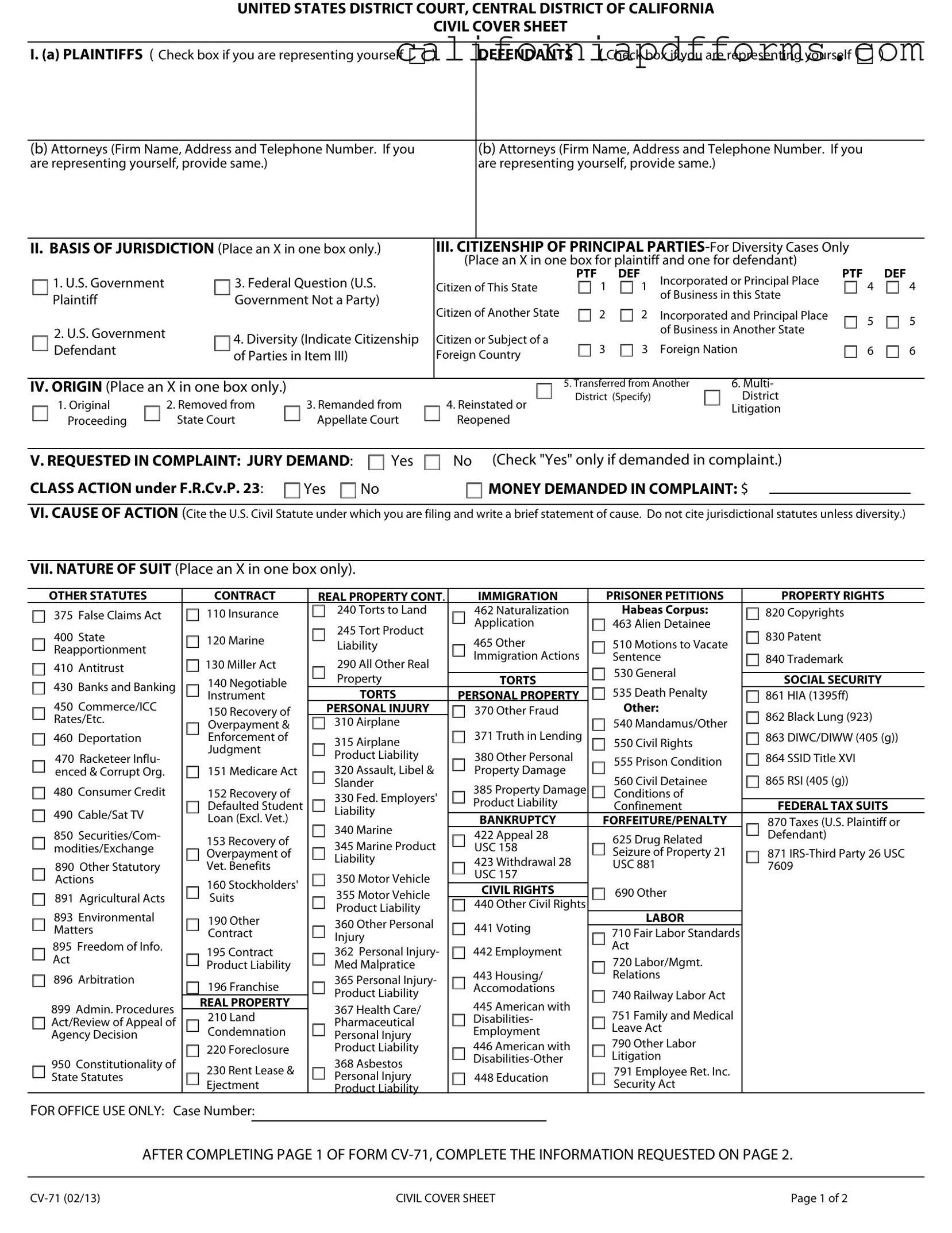The California CV-71 form, also known as the Civil Cover Sheet, is a document required by the United States District Court for the Central District of California. It is used to provide essential information about a civil case being filed in this court. This form helps the court manage cases effectively and ensures that all relevant details are readily available.
Both plaintiffs and defendants involved in a civil case must complete the CV-71 form. If you are representing yourself, you must check the appropriate box indicating that you are self-represented. Attorneys also need to provide their firm name, address, and contact information on the form.
The CV-71 form requires various pieces of information, including:
-
Names and contact information of plaintiffs and defendants.
-
The basis of jurisdiction for the case.
-
Citizenship details of the principal parties if the case is based on diversity.
-
The origin of the case (original, removed, etc.).
-
A jury demand, if applicable.
-
The cause of action, including relevant statutes.
-
The nature of the suit.
Complete all sections accurately to avoid delays in processing your case.
How do I determine the basis of jurisdiction?
Jurisdiction refers to the authority of the court to hear a case. On the CV-71 form, you must select one basis of jurisdiction by placing an "X" in the appropriate box. The options include:
-
Federal Question
-
Diversity of Citizenship
-
U.S. Government as a party
Choose the option that best fits your case. If you are unsure, consider seeking legal advice.
What is the significance of the nature of suit section?
The nature of suit section categorizes your case based on the legal issues involved. This helps the court assign your case to the appropriate judge. You must select one box that best describes the nature of your suit, such as civil rights, contract disputes, or personal injury claims. Accurate selection is crucial for proper case management.
Failure to file the CV-71 form may result in delays or even dismissal of your case. The court relies on this form for statistical tracking and to ensure proper case assignment. It is essential to complete and submit this form along with your other filings to avoid complications.
The CV-71 form is available on the United States District Court for the Central District of California's website. You can download the form directly from there. Make sure you are using the most current version of the form to ensure compliance with court requirements.
